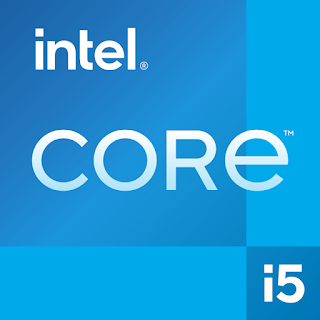An Ice-Lake-Y generation quad-core SoC for laptops and Ultrabooks, the Intel Core i5-1030NG7 was unveiled in May 2019 (Computex). It is perfect for use in thin and light laptops because this processor is made to offer a balance between performance and power efficiency. In this article, we'll examine the Intel Core i5-1030NG7's features, capabilities, and technical details in more detail.
Features
The Core i5-1030NG7 incorporates four Sunnycove processor cores, each of which has eight threads due to HyperThreading, and is clocked at 1 (base) to 3 (single core Turbo) GHz. Utilizing Turbo Boost, all four cores are capable of reaching 3 point 2 GHz. Intel claims that the Sunnycove cores deliver 18% more IPCs (Instructions per Clock).
Iris Plus Graphics, an integrated Gen 11 graphics card, is one of Ice-Lake's most significant upgrades. The Core i5-1030NG7 incorporates the largest G7 variant, featuring 64 CUs clocked at 300–1050 MHz. The AMD Vega 10 GPU found in the most recent Ryzen APUs should not be faster than the Iris Plus G7, which should be twice as quick as its predecessors.
The hardware acceleration of AI and the chip's partial integration of Thunderbolt and Wifi 6 are two additional enhancements for Ice Lake. Support for modules up to 3200 MHz (and LPDDDR4 3733) is provided by the integrated DDR4 memory controller.
Performance
The Core i5-1030NG7 offers a smaller package size (22 x 16.5 mm vs. 26 point5 x 18 point5 mm), a faster base clock (1100 MHz vs. 800 MHz), and a 1 Watt higher TDP than the Core i5-1030G7. The older Y-series dual core processors (Amber Lake-Y) should always be slower when combined with the two extra cores. Performance during brief bursts should be excellent; however, long workloads will depend on the cooling system and TDP settings in the laptop or tablet.
In contrast to the Core i7-1065G7's 15 to 25 Watt efficiency, the gaming performance will once again depend on the cooling solution and may noticeably deteriorate over time. g. ).
Specifications
The Core i5-1030NG7 is manufactured using Intel's new second-generation 10nm process, which should provide performance on par with TSMC's 7nm process. Due to the TDP's 10 Watt specification, the CPU can be used in thin and light laptops. Due to the partners' ability to configure the TDP up to 12 Watts, there are noticeable performance differences (caused by longer Turbo Boost times).
The processor's clock ranges from 1100 to 3500 MHz, and its Level 1 Cache is 192 KB, Level 2 Cache is 2 MB, and Level 3 Cache is 6 MB. The power consumption (TDP) is 10 watts, and there are 4/8 cores/threads.
Intuitively created for laptops and Ultrabooks, the Intel Core i5-1030NG7 is a potent and energy-efficient quad-core SoC. It was unveiled in May 2019 at Computex and is based on the Ice-Lake-Y generation. The SoC incorporates four Sunnycove processor cores, which provide 18% more IPCs than its forerunner, and is clocked at 1.1 (base) – 3.8 (single core Turbo) GHz. Using Turbo Boost, all four cores can accelerate to 3 points 2 GHz.
Comparing the i5-1030NG7 to the standard Core i5-1030G7, the former offers a smaller package, a faster base clock, and a 1 Watt higher TDP. This implies that it will have better short burst performance and be faster than the previous Y-series dual core processors. Long workloads, though, will depend on the cooling system and TDP settings in the laptop or tablet.
Ice-Lake's integrated Gen 11 graphics card, known as Iris Plus Graphics, represents the most significant improvement. The Core i5-1030NG7 features 64 CUs clocked at 300–1050 MHz, making it the largest G7 variant. The AMD Vega 10 GPU in current Ryzen APUs should be outperformed by the Iris Plus G7, which should be twice as fast as its predecessors.
Hardware acceleration for AI and a limited integration of Thunderbolt and Wifi 6 into Ice Lake are additional improvements. The integrated DDR4 memory controller supports modules that run at up to 3200 MHz (and LPDDDR4 3733). The SoC is manufactured using Intel's second-generation 10nm process, which should provide performance on par with TSMC's 7nm process.
Overall, the Intel Core i5-1030NG7 is an effective and potent SoC made for laptops and Ultrabooks. It offers several advancements over its forerunner, including a faster base clock, a more potent graphics card, and hardware-accelerated AI. The TDP settings and cooling system in the laptop or tablet will affect the SoC's performance, though.

